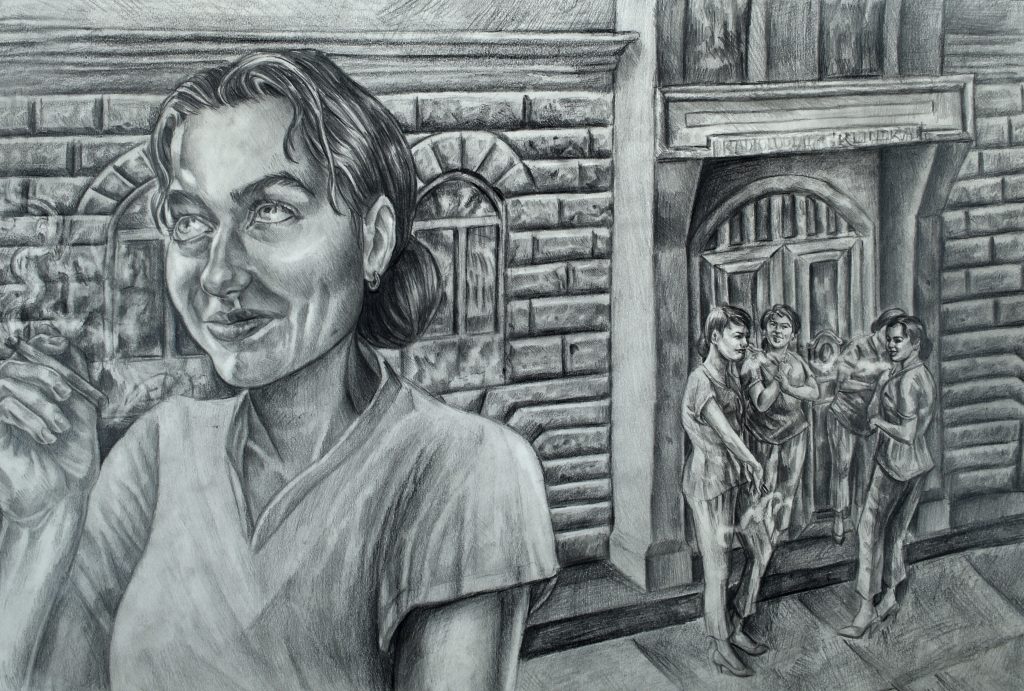

My parents are Hungarian immigrants to Canada, and I have always been intrigued by this part of my personal history.
Over the course of the Hungarian Revolution’s three weeks, an estimated 3,000 civilians were killed, making it a deeply traumatic historical event. I have always felt that certain aspects of this trauma have carried into the present, both in material and immaterial ways.
In the graphite piece attached, I explore the material impact of historical trauma. After several weeks interning at a Budapest hospital last summer, I saw the physical damage inflicted on the city during the revolution. Even over 60 years on, many buildings that were damaged in the revolution have never been repaired. I was captivated by the irony of hospital nurses casually lounging against this backdrop; they are the subjects of this piece.
Meanwhile, the second piece is my attempt at interpreting my grandmother’s recollection of this historical event. At the time of the revolution, she was a young woman living in Budapest. She has described seeing incredibly violent scenes unfold during her day-to-day commute. In this piece, I attempt to capture her resulting trauma through a harsh, surreal composition; the brushstrokes are jagged, the background harsh; the buildings are purposefully organic and flame-like, while the single tank is shapeless, almost melting. Thus, this piece focuses on the immaterial, psychological after-effects of historical trauma.
Irma is a current junior at Sentinel Secondary School/École Secondaire Sentinel in West Vancouver. She is passionate about the arts, especially poetry and illustration.